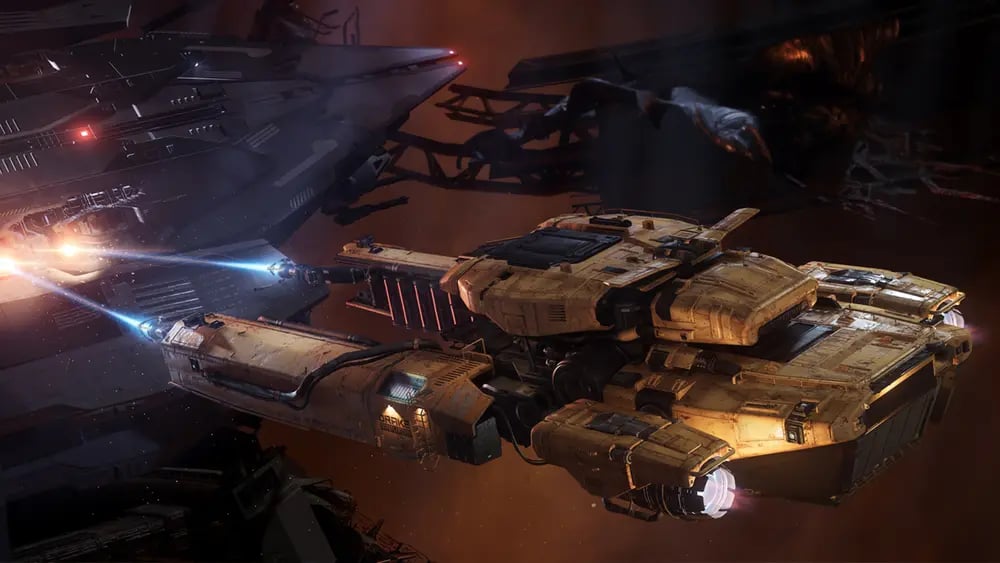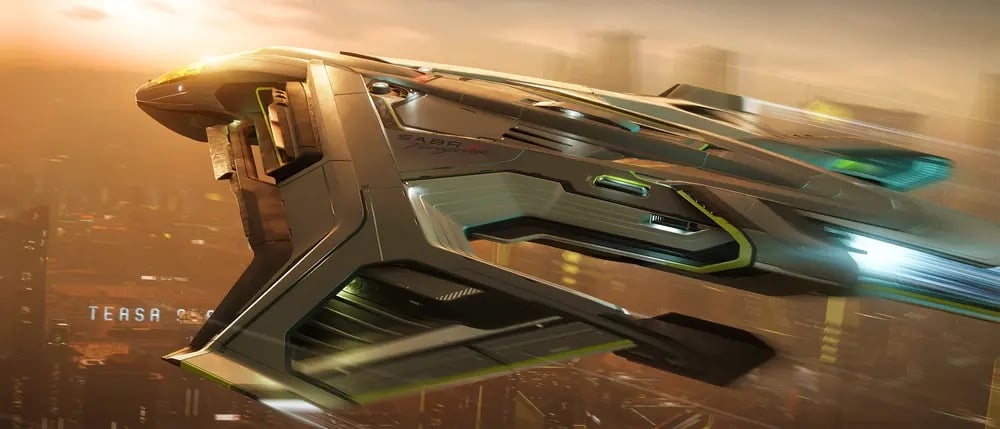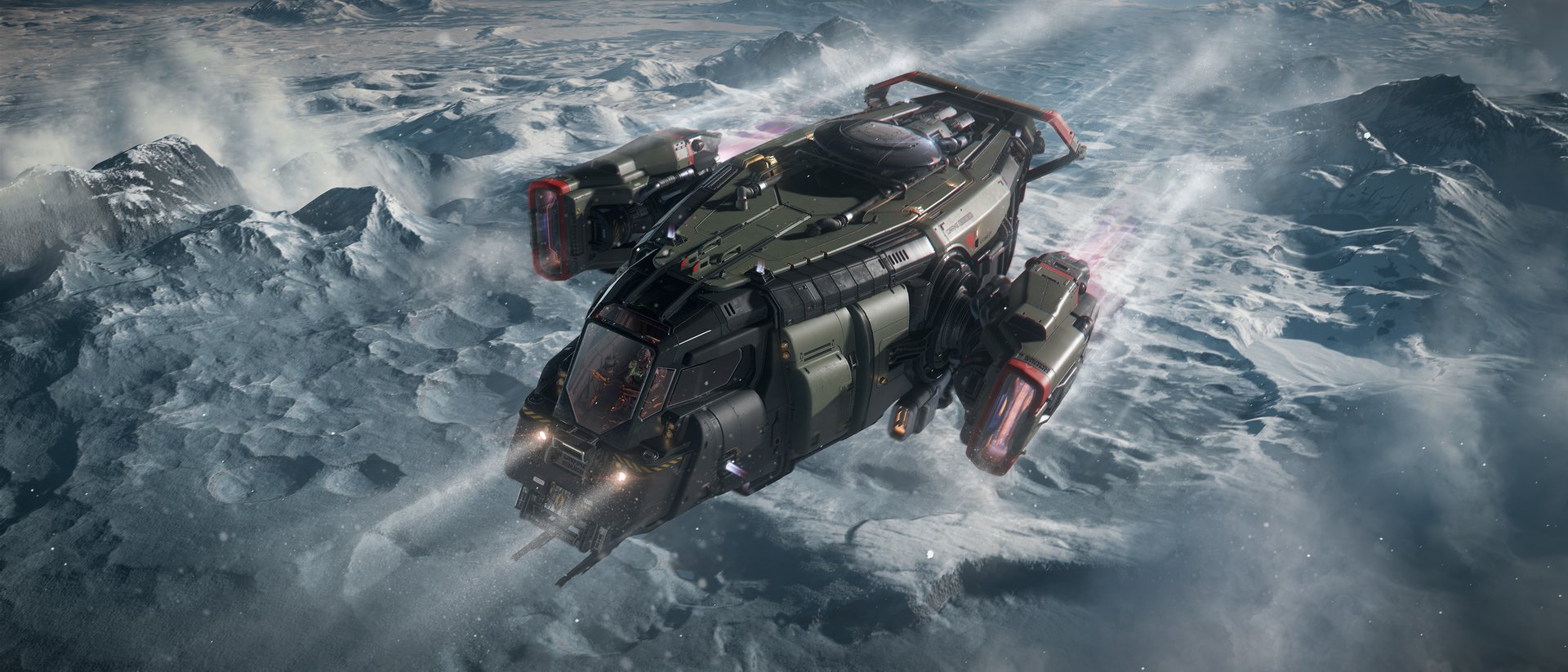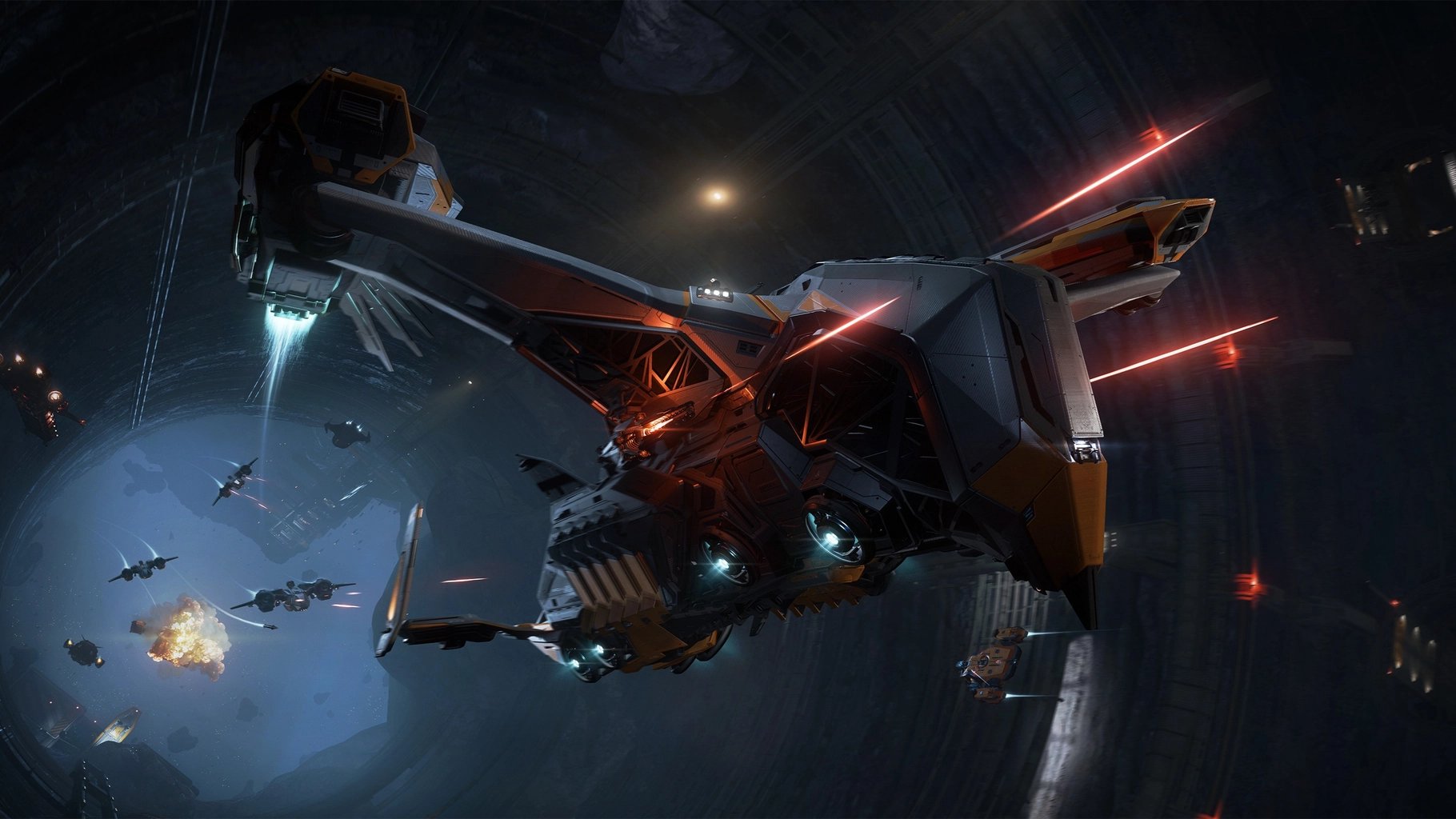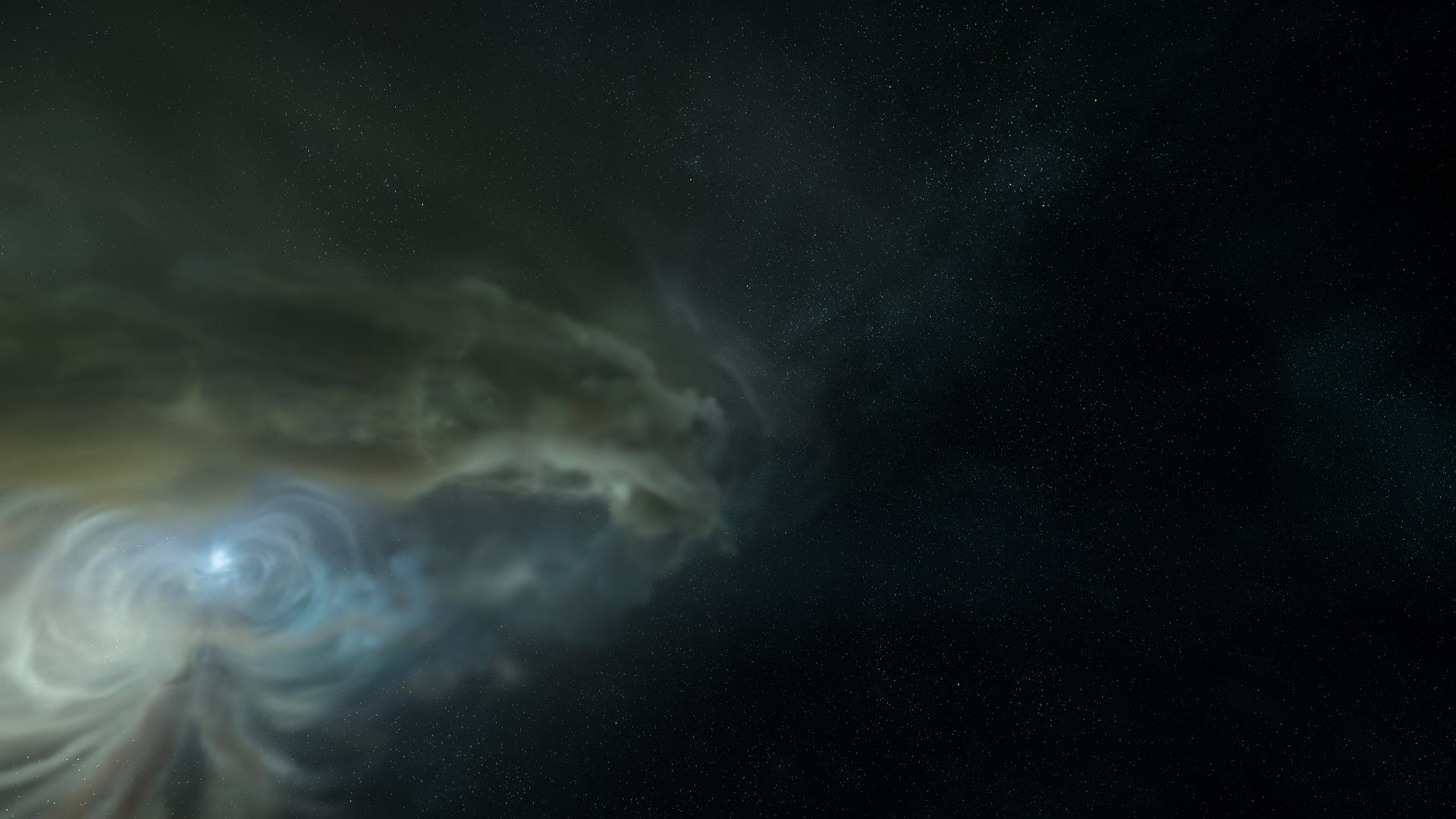Introduction to Salvaging
Salvaging in Star Citizen is a rewarding industrial career that turns the wreckage of the universe into cold hard credits. Players in this niche profession locate abandoned or destroyed ships and structures, then recover valuable components and materials. These salvaged items—ranging from ship weapons and quantum drives to sheets of Recycled Material Composite (RMC)—can be sold or repurposed for profit. Salvaging stands out as a lucrative and engaging loop, especially with the right tools and knowledge. In this complete guide, we will take you from the very first steps of salvage work to advanced strategies that seasoned salvagers use to maximize profit.
Don't forget: Add your referral code STAR-33Y6-YQX9 within 24 hours of signing up to claim an extra 50,000 aUEC for your account. Use this in-game currency to quickly buy the salvage tools and ship upgrades you need!
Why Salvaging Can Be Profitable
Salvage operations provide multiple revenue streams in Star Citizen. You can sell detached ship parts on the open market, refine hull plates into RMC (used for light repairs) or convert hulks into Construction Materials (building supplies) by breaking them apart. Compared to other careers, salvage offers high rewards for players who are patient and methodical. For example, a perfectly dismantled medium-size ship can yield components and materials worth tens of thousands of credits, all without firing a shot in combat. It’s also a relatively calm profession that supports solo or cooperative play: some salvagers quietly explore deep space in their ships, while others team up in a Reclaimer to tackle big salvage jobs.
Tip: Salvaging is in high demand! When repairs or building projects are needed in the ‘Verse, salvaged goods become valuable commodities. Learning this career early gives you a head-start on earning in the persistent universe.
Getting Started: Your First Steps
Equip yourself with the basics for salvage:
- Essential Gear: Make sure you have a Multi-Tool with a salvage attachment (like Cambolite-Lite) and a tractor beam module. Also carry empty salvage canisters. These Tier-0 tools are cheap and can smash hull scrap into your hold.
- First Ship: While you can salvage tiny debris on foot, a ship transforms your capabilities. Early choices:
- MISC Fortune – A small salvage rig with built-in filler and tractor.
- Drake Vulture – Solo salvage ship with dual scrap arms (great for medium wrecks).
- Aegis Reclaimer – A massive multi-crew salvage vessel; aim for this endgame platform.
- Salvage Contracts: On your mobiGlas, check the Contracts app. Salvage Rights (legal) missions cost a small fee for the location of an abandoned wreck (no time limit). Illegal salvage jobs give location for free or low cost but impose a timer and security response. Beginners should start with legal contracts to practice without risk.
Choosing Your Salvage Ship and Gear
Deciding on the right ship and equipment is crucial for efficiency and profit:
- MISC Fortune: This dedicated personal salvage outfitter comes with a MiniFiller station and a tractor beam. It’s tailored for solo salvagers: it automatically processes scrap crates and can craft ammo/canisters. The Fortune is excellent for low-scale contracts or wandering scrapyards. Use it when you mainly work alone and collect scrap from small wrecks or asteroid fields. The cargo hold size is modest, but the built-in filler automates scrap compaction.
- Drake Vulture: The Vulture is the first-capable salvage ship for many players. It features two pivoting salvage arms that can scrape hull sections, ejecting filled containers of RMC or ship parts. Its cargo hold is relatively small, but it’s agile and affordable (around 1.2 million aUEC in-game as of recent patches). The Vulture is ideal for solo salvage operations on single wrecks. Note: during hull scraping, keep an eye on container jams (see Tip below).
- Aegis Reclaimer: The king of salvage, the Reclaimer is a large capital salvage ship with coordinated stations: one for deploying tractor beams and another for operating the salvage arms. Equipped with multiple beds (for multi-crew), an industrial-scale shredder/Filler, and huge cargo capacity, it can tackle entire fleets of wrecks. It allows fracturing and processing of huge vessels into Construction Materials. Requiring a crew to operate efficiently, the Reclaimer is the endgame of salvage careers. It’s expensive (roughly 15 million aUEC) and is best after you’ve earned enough to justify the investment.
In addition to ships, here’s the core gear checklist:
- Multi-Tool Salvage Attachments:
- Cambolite-Lite SRT (Salvage Reclaimer Tool): A short-range cutter for scraping hull plating (tier 0).
- Cambolite SRT: A longer-range cutter (higher tier) that was introduced later in development.
- Multi-Tool Tractor Beam: The TruHold or equivalent (tier 0) to pick up containers and break away components on foot.
- Canisters: Salvage canisters to capture scraped RMC or components found on wrecks.
- Inventory Modules: Carry extra tool ammo or fuel (for the Multi-Tool) and any needed crafting mods.
| Ship | Role | Crew | Cargo / Equipment |
|---|---|---|---|
| MISC Fortune | Solo/Light Salvage | 1 | Medium hold, built-in Tractor Beam & MiniFiller |
| Drake Vulture | Solo Salvage | 1 | Small hold (~2 SCU), dual salvage arms |
| Aegis Reclaimer | Heavy Multi-Crew Salvage | 2-4 | Very large hold, salvage station with Filler |
In a Drake Vulture, enable the Auto Eject checkbox on the salvage container device. This automatically drops filled RMC containers. If a container still jams, get out of the pilot seat and use your Multi-Tool's tractor beam to clear space in the cargo hold. Otherwise you won't be able to continue scraping.
If you don’t own a salvage ship yet, you can still salvage small wrecks on foot. Use your equipped multi-tool and a scanning link to find minor debris or salvage panels near wreck sites. There are even salvage nodes in the universe (e.g., in asteroid fields) that reward resources.
Finding and Selecting Salvage Targets
Knowing where the wrecks are is half the battle. Salvage content in the game comes in a few main forms:
- Abandoned and Destroyed Vehicles: Keep an eye out for ships drifting in space or lying in orbit, especially around points of interest such as beacon stations, cities, ship graveyards (like Brio’s Breaker Yard on Port Olisar), and asteroid fields. You can also scan intact derelicts to see if ownership is “Gamerules”. If they are truly abandoned, they are free to salvage.
- Wrecked Locations: Some wrecks spawn in asteroid belts or derelict zones. You might find clusters of junk and crash sites in systems like Hurston’s asteroid field, Crusader’s rings, or Stanton’s corners.
- Salvage Contracts: The Contract Manager has salvage job listings.
- Salvage Rights (Legal): Pay a small fee to claim the rights to scrap a ship, with no timer. You get the location of a small abandoned ship (often a Drake, Merlin, or similar).
- Salvage Job (Illegal): Pay a larger fee for a medium-to-large wreck and a time limit. You must salvage or tow the hull before security arrives.
- Clean Up (Illegal): A no-fee contract that pays for quickly stripping a wreck. A timer counts down but you get bonus funds for finishing early.
- In the Wake of Disaster (Contract): A high-paying contract that reveals multiple large wrecks (outside monitored space). You can share this mission with multiple players, and because it’s in lawless space, no police response.
When choosing a mission:
- Beginners: Start with a low-cost legal Salvage Rights mission. This lets you practice with no risk of CrimeStat or timer.
- Veterans: Try “Wake of Disaster” contracts with friends to split big hauls, or tackle illegal contracts solo for higher yields.
- Always check mission details: it will list the target’s location, ship type, and any time limit.
Salvage Operations: Step by Step
Once you arrive at the wreck, follow this outline:
- Check the Wreck: Scan the ship’s status. If the ship is intact with shields or power on, disable it first (e.g., use a Suckerpunch cannon) or tow it out of a protected zone. Only proceed once it’s safe to work.
- Detach Valuable Components: Point your multi-tool’s tractor beam at high-value parts (weapons, quantum drives, power plants, etc.) and remove them. These parts are individually valuable and saved from the shredder. Store them in cargo or containers.
- Hull Scraping: Now begin scraping the hull plating for Recycled Material Composite (RMC). If in a Salvage ship, activate the salvage arms (pilot ‘M’ in Vulture or operator seat in Reclaimer) and target broad hull sections. A HUD overlay shows how much scrap is extractable under your crosshair; cut while it reads “Valid”. Generally stay ~50–150m away for an optimal sweep. Each 1 SCU of scrap fills a canister. The ship will auto-eject each filled canister. (On a Vulture, clear the cargo hold to receive the second container without jamming.)
- Collect the Containers: Grab each filled scrap container with your tractor beam (or use the ship’s beam to haul it) into the cargo bay. If you’re on foot, use the multi-tool’s tractor attachment to pull them in.
- Fracture and Munch (Reclaimer): If you have a capital salvage ship and the wreck is stripped, switch to Fracture Mode. Break the hull into chunks. Then switch to Disintegrate Mode; this grinds the pieces into Construction Material crates. Ensure the wreck’s power is off and all crew have evacuated—fracturing will lethally destroy the ship and any remaining unsalvaged components.
(Note: The Aegis Reclaimer can fracture large ships; the Vulture can only fracture smaller vessels, roughly up to the size of a Mercury Star Runner.) - Finish Up: Continue until the entire hull is scraped and/or processed. By the end, you will have gathered components, RMC canisters, and possibly Construction Materials. Pack everything into your hold and head home for profit.
Components, Hull Scraping and Structural Salvage
Understanding the three facets of salvage maximizes your haul:
- Component Salvage: Detach intact components (weapons, shields, coolers, etc.) with your Multi-Tool’s tractor or ship tractor. These items often sell for higher prices than raw material. Store them safely in your cargo.
- Hull Scraping (RMC): The outer hull plating contains mixed alloys. Scraping it yields Recycled Material Composite. You’ll collect RMC crates — note that empty and filled RMC crates sell for the same price. Use RMC primarily for onsite repair or saving it to craft later.
- Structural Salvage (Construction Materials): After scraping, fracturing the hull yields Construction Materials. The Reclaimer’s shredder (Disintegrate mode) turns broken hull chunks into crates of basic building materials. These can be sold or used for base construction. Structural salvage offers extra value beyond simple scrap.
By the end of a job, you should have a mix of ship parts, RMC, and possibly Construction Material crates ready for sale.
Cargo Management and Selling Salvage
Once gathered, all salvage loot goes in your hold:
- Collect and Store: After each container is ejected, use your tractor beam to retrieve it into the cargo bay. On the Vulture, be vigilant: full containers can block ejection. In that case manually eject or move containers to clear the way.
- Inventory Limits: Periodically check your available hold space. Prioritize valuable items (components and contraband) over lower-tier scrap.
- Selling Salvage: Dock at a Trade & Development Division (TDD) office or salvage yard to sell. Every port or major city has terminals that buy RMC and Construction Materials at fixed prices. Rare components (like Quantum Drives, Stealth Systems, bulk drugs, etc.) can fetch higher rewards at specialized kiosks or on the black market.
- Reputation and Factions: Some NPC factions specialize in salvage. Completing salvage contracts improves standing with them, which can unlock future salvage missions and better prices. For example, Brio’s Breaker Yard (Moon Port Olisar) is a hub for salvage: it buys materials and offers contracts.
Advanced Salvaging Tips
- Salvage Hotspots: Wrecks congregate in war zones or trade lanes. Systems near past battles often have debris fields. Scan around large cities or asteroid fields where NPCs fight; crashed ships might be floating nearby.
- Multi-Tool Salvage: Without a ship, you can still salvage minor wrecks. Use your Multi-Tool’s Cambolite-Lite attachment to scrape debris and panels found in space. This can yield small amounts of RMC and occasional components.
- Teamwork Pays: In a Reclaimer crew, assign roles: one pilot, one or two salvage operators, and one cargo manager. Communicate constantly (e.g. via comms) about ejections and inventory to avoid lost containers or empty ejection.
- Illegal Cargo: Some wrecks contain contraband (drugs) or high-value cargo. Store and transport these to a black-market kiosk in friendly space for extra profit—just be mindful of CrimeStat and fines if you’re in monitored areas.
- Quick Rewards: If you have a short time window (timer on illegal mission), focus on core salvage. Don’t waste time on low-grade interior; strip the outer hull quickly to maximize yield before alarms.
Detach high-value components (like quantum drives and power plants) first when salvaging a ship. These parts are more valuable than raw materials. Selling them directly can earn a bigger profit and ensures you don’t accidentally destroy them when you fracture the hull later.
Balancing Risk: Legalities and CrimeStat
Salvaging straddles the law. To keep your record clean:
- Always check a ship’s Owner via your UI. Only salvage ‘Gamerules’ (abandoned) or NPC-owned wrecks when in monitored space.
- If a mission is illegal, do it in unmonitored sectors (often marked by the red zone on your mobiGlas map). Outside comm-coverage, crimes don’t stick.
- Fracturing or destroying a ship counts as “killing” it. If you do so illegally, the game treats it like a ship kill. Pay attention to timers on illegal salvage jobs – finish quickly or log out.
- To safely loot an intact ship in a safe zone, deploy a small craft, tow the wreck outside the station’s process zone, and then begin dismantling. This avoids Armistice violation fines.
- Tip: If someone else has activated a salvage mission on a wreck, stay clear. You cannot salvage wrecks that are already claimed by another player or mission giver.
Conclusion
The Salvaging career is an ever-evolving journey in Star Citizen. Starting with a simple multi-tool and a few credits, you can work your way up to teaming with a crew in a giant Reclaimer. Along the way you will learn the game’s mechanics, make strategic decisions, and rake in profits from the universe’s detritus. Take advantage of the Pro Tips in this guide, stay aware of salvage laws, and continuously upgrade your equipment.
With practice, your salvage career can become a steady source of income and fun. Happy salvaging, and may your holds be full of treasure!
